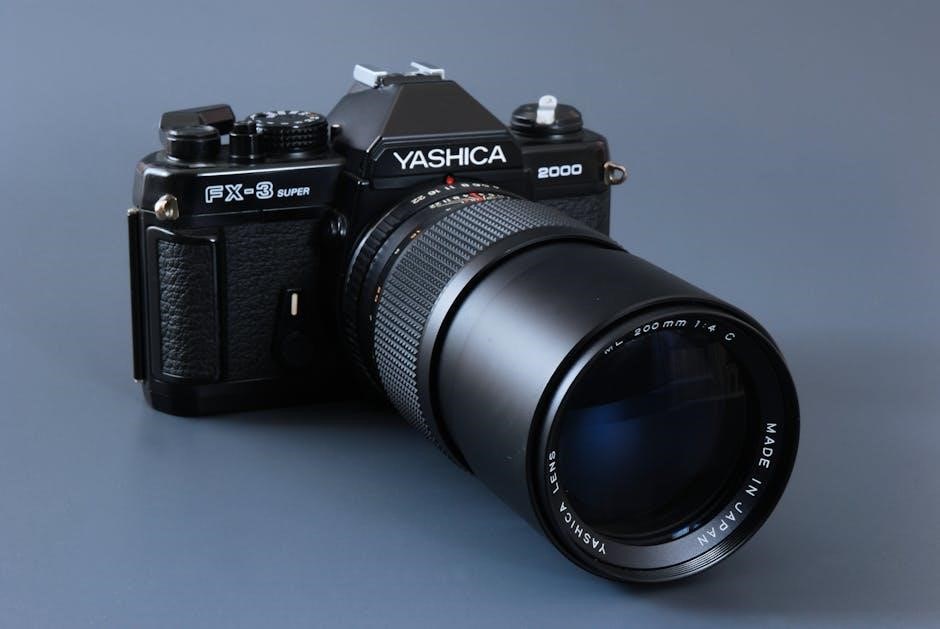SL-2000-P Manual: A Comprehensive Guide

This comprehensive guide offers detailed insights into the Air Specialties Express SL-2000-P Security Sensors. It covers product specifications, installation, maintenance, troubleshooting, and accessory compatibility. Explore its universal voltage and easy design.
The SL-2000-P duct smoke detector represents a significant advancement in early smoke detection technology. Designed for use in Heating, Ventilation, and Air Conditioning (HVAC) systems, it offers a proactive approach to fire safety in commercial, industrial, and residential settings. This device is engineered to detect smoke and combustion byproducts within ductwork, providing rapid alerts to prevent the spread of fire and minimize potential damage.
This model employs photoelectric sensing technology, known for its effectiveness in detecting a wide range of smoke particle sizes. The SL-2000-P’s robust design ensures reliable performance across various environmental conditions. Its compatibility with different voltage options (24 VAC, 24 VDC, 115 VAC, or 230 VAC) further enhances its versatility for diverse installation requirements.
A key feature of the SL-2000-P is its ease of installation and maintenance, making it a practical choice for both new and retrofit applications. With its user-friendly design and comprehensive documentation, the SL-2000-P stands out as a dependable solution for enhancing fire safety in ducted HVAC systems.
SL-2000-P: Product Overview and Application
The SL-2000-P duct smoke detector is a sophisticated device engineered for the early detection of smoke and combustion products circulating through HVAC ductwork. Utilizing photoelectric sensing technology, it excels at identifying a broad spectrum of smoke particles, ensuring rapid response to potential fire hazards. This detector is designed for versatile application across commercial, industrial, and residential environments, providing critical protection by detecting smoke before it spreads throughout a building.

Its primary application lies in monitoring air quality within HVAC systems, where it can quickly identify smoke originating from various sources, such as faulty equipment or external fires. By integrating the SL-2000-P into a building’s fire safety system, occupants and assets are afforded enhanced protection. This proactive approach allows for timely intervention, preventing extensive damage and ensuring safer evacuation procedures.
Furthermore, the SL-2000-P’s robust construction and compatibility with multiple voltage options make it an adaptable solution for diverse installation scenarios. Its user-friendly design facilitates straightforward setup and maintenance, making it a valuable component in any comprehensive fire prevention strategy.
Key Features and Innovations of the SL-2000 Series
The SL-2000 Series incorporates several key features and innovations that distinguish it from conventional duct smoke detectors. A notable innovation is its patented mechanism for tool-free installation and removal of sampling and exhaust tubes, accessible from either the front or rear, streamlining maintenance. The series supports universal voltage compatibility, operating on 24 VAC, 24 VDC, 115 VAC, or 230 VAC, enhancing its adaptability to diverse power systems.
Another significant feature is the inclusion of a velocity adapter insert, enabling operation in low air velocity environments, expanding its application range. The SL-2000 series includes interconnectivity, supporting up to 30 units for synchronized alarm annunciation. Furthermore, the design incorporates dust filtering within the detector head, minimizing the need for frequent maintenance, and a manual reset switch located on the front facilitates easy operation.
These innovations reflect a commitment to installer-friendly design, providing enhanced efficiency and value for both installers and end-users. These elements combined contribute to a more reliable and user-centric smoke detection system.
SL-2000-P Specifications
The SL-2000-P photoelectric duct smoke detector is engineered with precise specifications to ensure optimal performance and reliability. Its NEMA Type 3R enclosure measures 11.06 x 18.13 x 4.38 inches (28.1 x 46.0 x 11.2 cm), providing robust protection against environmental factors. The detector operates effectively within duct widths ranging from 12 inches to 10 feet (30.5 cm to 3.05 m), accommodating various HVAC system configurations.
Air velocity requirements are between 100 and 4000 feet per minute (0.5-20.3 mps), ensuring consistent detection across diverse airflow conditions. The device is voltage compatible, supporting 24 VAC, 24 VDC, 115 VAC, and 230 VAC power inputs for flexible installation options. Alarm contacts consist of 2 sets of form C relays rated at 10A, 115VAC resistive, facilitating seamless integration with existing alarm systems.
The operating temperature range is 32 to 140 degrees Fahrenheit (0 to 60 degrees Celsius), with a humidity tolerance of 10 to 85% RH non-condensing. The detector head doesn’t require additional filters. It also includes a manual reset switch.

Voltage Compatibility
The SL-2000-P duct smoke detector is designed with universal voltage compatibility, accommodating a wide range of power supply options; This flexibility simplifies installation and ensures seamless integration into various building systems, regardless of the existing electrical infrastructure. The detector can operate on any one of four input voltages: 24 VAC, 24 VDC, 115 VAC, or 230 VAC.

This multi-voltage capability eliminates the need for specialized power converters or dedicated wiring configurations, reducing installation time and costs. Whether the building utilizes low-voltage DC power or standard AC power, the SL-2000-P can be readily adapted. The detector’s internal circuitry automatically detects and adjusts to the applied voltage, ensuring consistent performance and reliable smoke detection.
This feature enhances the detector’s versatility, making it suitable for diverse applications, from small residential buildings to large commercial complexes. Installers can confidently deploy the SL-2000-P, knowing it will seamlessly integrate into the existing power system without requiring extensive modifications.
Air Velocity and Duct Width Requirements
The SL-2000 series, including the SL-2000-P model, is engineered to operate effectively within specific air velocity and duct width parameters. Adhering to these requirements is crucial for ensuring accurate smoke detection and preventing false alarms. The detector is designed to function optimally in duct widths ranging from 12 inches (30.5 cm) to 10 feet (3.05 meters).
Furthermore, the SL-2000 series requires a minimum and maximum air velocity to properly sample the air within the duct. The specified air velocity range for proper operation is between 100 and 4000 feet per minute (fpm), which translates to 0.5 to 20.3 meters per second (mps). Maintaining air velocity within this range ensures adequate airflow through the sampling tubes.
For installations where air velocity falls below the minimum threshold, the included velocity adapter insert must be used. It allows the duct detector to operate effectively even at extremely low air velocities, optimizing smoke detection capabilities.

Installation of the SL-2000-P
Proper installation of the SL-2000-P is crucial for optimal performance. Follow the step-by-step instructions to ensure correct mounting, wiring, and sampling tube placement. Using the velocity adapter insert is essential for low-velocity environments.

Step-by-Step Installation Instructions
Begin by carefully unpacking the SL-2000-P duct smoke detector and verifying all components are present, including the velocity adapter if applicable. Next, select a suitable mounting location on the HVAC duct, ensuring it meets the duct width requirements of 12.0 to 120 inches.
Use the provided template to mark the mounting holes and sampling tube locations. Drill pilot holes as indicated. Secure the detector housing to the duct using appropriate screws. Install the sampling and exhaust tubes, ensuring proper orientation according to airflow direction.
Connect the wiring according to the wiring diagram, paying close attention to voltage compatibility (24 VAC, 24 VDC, 115 VAC, or 230 VAC). Ensure all connections are secure. Finally, verify the detector’s functionality using the manual reset switch and observing the alarm indicators. Proper installation will ensure early detection.
Using the Velocity Adapter Insert
The SL-2000-P duct smoke detector comes equipped with a velocity adapter insert, either pre-installed or included within the installation kit. This adapter is crucial for ensuring optimal performance, especially in environments with low air velocities. The velocity adapter allows the duct detector to operate effectively at air velocities as low as 100 feet per minute (fpm).
To install the adapter, locate the designated slots within the detector housing. Carefully insert the adapter, ensuring it is securely in place. The adapter is specifically designed to modify the airflow dynamics within the detector, improving its sensitivity to smoke particles even when air movement is minimal.
When using the velocity adapter, it is important to verify the differential pressure between the sampling and exhaust tubes. This pressure should fall within the range of 0.01 to 1.2 inches of water. Regularly inspect adapter.
Sampling and Exhaust Tube Installation
Proper installation of the sampling and exhaust tubes is crucial for the effective operation of the SL-2000-P duct smoke detector. These tubes are responsible for drawing air from the duct into the detector and then expelling it back into the duct system. The SL-2000 Series features a unique, patented mechanism that allows for easy installation and removal of these tubes from either the front or rear of the detector housing.
To begin, identify the sampling and exhaust tube ports on the detector. The sampling tube, typically red, draws air into the detector. The exhaust tube, often blue, returns the air to the duct. Ensure that the tubes are inserted fully and securely into their respective ports.
When installing the tubes, take into account the direction of airflow within the duct.

Maintenance and Troubleshooting
Ensure optimal performance of your SL-2000-P with proper maintenance. This section covers procedures, common issues, and manual reset switch operation. Regular checks and timely troubleshooting ensure reliable smoke detection.
Maintenance Procedures
Maintaining the SL-2000-P duct smoke detector involves consistent checks and cleaning to ensure optimal functionality. Begin by visually inspecting the detector for any physical damage or obstructions. Verify that the sampling and exhaust tubes are free from debris, ensuring proper airflow. Periodically clean the detector head, removing any accumulated dust or particles, as detectors shall not require additional filters or screens which must be maintained.
Test the detector’s functionality regularly using the manual reset switch, which shall be located on the front of the device, and observe the alarm indicators. Ensure that all wiring connections are secure and free from corrosion. If equipped, check the remote accessories, such as the MSR series, for proper operation.
Replace the detector head with models 55000-350APO (photoelectric) or 55000-250APO (ionization) when necessary. Document all maintenance activities, including dates, observations, and actions taken, to track the detector’s performance and ensure continued reliability. Regular adherence to these procedures will prolong the SL-2000-P’s lifespan.
Troubleshooting Common Issues
When troubleshooting the SL-2000-P duct smoke detector, begin by verifying the power supply and ensuring it matches the unit’s voltage requirements (24 VAC, 24 VDC, 115 VAC, or 230 VAC). If the detector fails to activate during testing, check the wiring connections for any loose or damaged wires. Confirm that the sampling and exhaust tubes are correctly installed and free from obstructions, ensuring differential pressure is between 0.01 and 1.2 inches of water.
False alarms can often be attributed to high humidity or dust accumulation on the detector head; clean the head and verify that the environment meets the operating humidity range of 10 to 85 RH (non-condensing). If the detector indicates a trouble condition, consult the manual for specific error codes and recommended actions.
Ensure the manual reset switch is functioning correctly. For persistent issues, consider replacing the detector head or contacting a qualified technician for further assistance. Remember to document all troubleshooting steps and results.
Manual Reset Switch Operation
The SL-2000-P duct smoke detector is equipped with a manual reset switch located on the front of the device, designed for straightforward operation. This switch plays a crucial role in resetting the detector after an alarm event or during maintenance procedures; To initiate a reset, simply press and release the manual reset switch. This action clears any active alarm states and allows the detector to return to its normal monitoring mode.
It is essential to verify that the cause of the initial alarm has been addressed before performing a reset. Resetting the detector without resolving the underlying issue may result in repeated alarms. After pressing the reset switch, observe the detector’s indicator lights to confirm successful reset and normal operation.

If the detector fails to reset, check the power supply, wiring connections, and detector head for any faults. Consult the troubleshooting section of this manual for further guidance.

Accessories and Compatibility
Explore compatible accessories for the SL-2000-P, including remote accessories like the MSR Series, which features LED indicators and buzzer options. Learn about replacement detector heads to ensure continued optimal performance.
Compatible Remote Accessories (MSR Series)
The SL-2000-P duct smoke detector offers compatibility with a range of MSR Series remote accessories, designed to enhance functionality and monitoring capabilities. The MSR series typically includes features such as LED indicators for alarm, pilot, and trouble conditions, providing clear visual status updates. Programmable buzzers for alarm and trouble events are also common, offering audible alerts.
These remote accessories often incorporate a buzzer silence function with visual notification and ringback features, allowing for temporary silencing of audible alarms while maintaining awareness of the event. Key-operated detector test/reset functions provide secure control over system testing and reset procedures. Moreover, push-button operated LED/buzzer tests simplify routine maintenance and verification of accessory functionality.
These remote accessories enhance overall system management, offering convenient monitoring and control from accessible locations. Consult the specific MSR series model’s documentation for detailed features and functionalities.
Replacement Detector Heads
The SL-2000-P duct smoke detector is designed with replaceable detector heads to ensure continued optimal performance and longevity. When a detector head reaches the end of its service life or becomes damaged, a replacement can be easily installed without replacing the entire unit. For the SL-2000-P, the recommended replacement photoelectric smoke detector head is the 55000-328APO.
This replacement head is specifically designed to be compatible with the SL-2000-P model, ensuring proper fit and functionality. Replacing the detector head is a straightforward process that can be performed by qualified personnel, following the instructions provided in the SL-2000-P manual. Regular replacement of the detector head, as recommended by the manufacturer, helps maintain the detector’s sensitivity and accuracy in detecting smoke and products of combustion.
Always ensure that the replacement head is the correct model for the SL-2000-P to avoid any compatibility issues.
